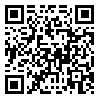Volume 23, Issue 70 (9-2023)
jgs 2023, 23(70): 505-522 |
Back to browse issues page
Download citation:
BibTeX | RIS | EndNote | Medlars | ProCite | Reference Manager | RefWorks
Send citation to:



BibTeX | RIS | EndNote | Medlars | ProCite | Reference Manager | RefWorks
Send citation to:
Doosthoseini M, Bigdeli Rad V, Moeinifar M. (2023). Codification a model of a creative urban area from the perspective of social capital, Case study: District 11 of Tehran. jgs. 23(70), : 26 doi:10.61186/jgs.23.70.505
URL: http://jgs.khu.ac.ir/article-1-3826-en.html
URL: http://jgs.khu.ac.ir/article-1-3826-en.html
1- PhD student in urban planning, Department of Urban Planning, Faculty of Architecture and Urban Planning, Qazvin Branch, Islamic Azad University, Qazvin, Iran, PhD student in urban planning, Department of Urban Planning, Faculty of Architecture and Urban Planning, Qazvin Branch, Islamic Azad University, Qazvin, Iran
2- Assistant Professor, Department of Urban Planning, Faculty of Architecture and Urban Planning, Qazvin Branch, Islamic Azad University, Qazvin, Iran, Assistant Professor, Department of Urban Planning, Faculty of Architecture and Urban Planning, Qazvin Branch, Islamic Azad University, Qazvin, Iran ,vahid.bigdeli@qiau.ac.ir
3- Assistant Professor, Department of Urban Planning, Faculty of Architecture and Urban Planning, Qazvin Branch, Islamic Azad University, Qazvin, Iran., Assistant Professor, Department of Urban Planning, Faculty of Architecture and Urban Planning, Qazvin Branch, Islamic Azad University, Qazvin, Iran.
2- Assistant Professor, Department of Urban Planning, Faculty of Architecture and Urban Planning, Qazvin Branch, Islamic Azad University, Qazvin, Iran, Assistant Professor, Department of Urban Planning, Faculty of Architecture and Urban Planning, Qazvin Branch, Islamic Azad University, Qazvin, Iran ,
3- Assistant Professor, Department of Urban Planning, Faculty of Architecture and Urban Planning, Qazvin Branch, Islamic Azad University, Qazvin, Iran., Assistant Professor, Department of Urban Planning, Faculty of Architecture and Urban Planning, Qazvin Branch, Islamic Azad University, Qazvin, Iran.
Abstract: (6474 Views)
The creative urban area must be able to support the economy of the urban area, intelligent transportation, management rehabilitation as well as improving environmental performance, and also it can be providing the grounds for the realization of social capital in order to achieve the indicators of social capital. The present article aims to identify the factors for the realization of the model of creative urban area from the perspective of social capital in District 11 of Tehran. The methodology of research is descriptive-analytical and after referring to library resources, the ideas, views of related theories and the concepts of the research were examined. Statistical sample included academic community and urban specialists working in scientific centers. A questionnaire was used to examine the views and opinions of the academic community and urban specialists working in scientific and specialized interview centers. In this regard, SPSS and Excel software were used to answer the questions and achieve the objectives of research and analysis of the results of the questionnaires. The results of the research showed that the indicators of turnout, attendance at meetings related to regional affairs and creative goals, level of trust in institutions at different levels, level of information about local and national affairs and talent search, level of feeling of influencing events. And the specific values of each of the six factors were higher than the value of 1. Also, studies indicated that the cumulative variance explained by the relevant factors in the study sample is about 69.879, which explains the development of a model of a creative urban area in the 11th district of Tehran and represents 70% of the model realization based on the social capital approach.
Article number: 26
Type of Study: Applicable |
Subject:
Geography and Urban Planning
Send email to the article author
| Rights and permissions | |
 |
This work is licensed under a Creative Commons Attribution-NonCommercial 4.0 International License. |

This work is licensed under a Creative Commons — Attribution-NonCommercial 4.0 International (CC BY-NC 4.0)






